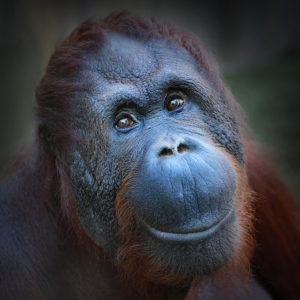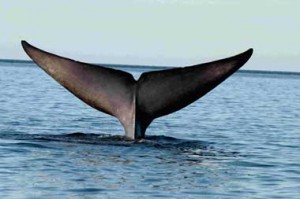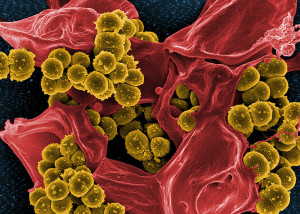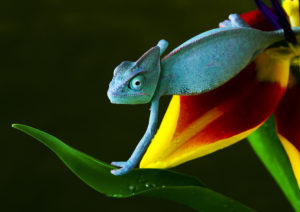 While great progress is made in research allowing ever more detailed descriptions of all cellular processes, there are still severe limitations on the interpretation of neuroscience in terms of understanding behavior and the mind. Previous posts have shown that there are many problems in the interpretations of current neuroscience. Posts have shown issues with brain mapping, with using caged animals, and with interpretation of MRIs. Now a new research problem of species definitions.
While great progress is made in research allowing ever more detailed descriptions of all cellular processes, there are still severe limitations on the interpretation of neuroscience in terms of understanding behavior and the mind. Previous posts have shown that there are many problems in the interpretations of current neuroscience. Posts have shown issues with brain mapping, with using caged animals, and with interpretation of MRIs. Now a new research problem of species definitions.
It is surprising how much difference having an animal in captivity makes for results when studying the brain. These affects are obvious with highly intelligent primates and birds, but even occur with insects and worms. Another finding is that there are many varied effects when the same research is done in different species and it is therefore difficult to extrapolate to the human brain.
 More recently, the importance of microbes has become apparent to the outcomes of research into all aspects of animal behavior. In fact, microbes living in human beings produce a much larger number of molecular products than humans own DNA—with 300 times more total genetic information in the gut alone. These products have vast effects throughout the body, but including the brain.
More recently, the importance of microbes has become apparent to the outcomes of research into all aspects of animal behavior. In fact, microbes living in human beings produce a much larger number of molecular products than humans own DNA—with 300 times more total genetic information in the gut alone. These products have vast effects throughout the body, but including the brain.
In terms of affecting research, microbes are never exactly the same even in experiments that are supposed have accounted for all variables. The environment, cages, animal species, can all be exactly the same but the microbes may be different and cause different results. See the recent post which discusses the difficulty in interpreting research, even if all other variables are exact. Therefore, understanding how the microbes interact in detail will be necessary before laboratory results in animal research can really be validated.
Now a new problem for reproducibility has been identified. This includes the fact that it is not yet clear how species are identified. Therefore, we don’t even really know if we are dealing with the same species or not. This problem is particularly acute with microbes, but exists throughout all of the Kingdoms and species.
Lack of Clarity in Definition of Species
 Recently, the classification of complex creatures has been termed chaotic at best. This creates research that uses different terms and also affects efforts at conservation. First the word “species” is not clearly defined in a way that all scientists use. There are now more than two dozen different definitions that invoked at different times by both government agencies and scientists, when it is most convenient. These varied definitions undermine research and conservation efforts. Also, this undermines scientific research in general. Mistakes also cost money.
Recently, the classification of complex creatures has been termed chaotic at best. This creates research that uses different terms and also affects efforts at conservation. First the word “species” is not clearly defined in a way that all scientists use. There are now more than two dozen different definitions that invoked at different times by both government agencies and scientists, when it is most convenient. These varied definitions undermine research and conservation efforts. Also, this undermines scientific research in general. Mistakes also cost money.
The study of species definition is called taxonomy. In fact, the world organizations in science do not have a clear method to arrive at decisions in taxonomy. Definitions are still difficult. Most would agree that species definition should be related to evolution and be defined by one specific branch in an evolutionary line. But, this is not defined anywhere. And genetic information is getting more complex by the day. Many discoveries show that what were once thought to be closely related in evolution are not. The taxonomist takes one of the definitions and then either creates or changes the “species”. There relates to the old philosophical problem of “splitters” and “lumpers” in any definition.
Splitters and Lumpers
 Some of the problems include the fact that study groups for different types of creatures have created their own traditions. One example is the study of mammals. Mammal scientists define different species by the two having one ancestor and the fact that both are different either by physical appearance or by genes.
Some of the problems include the fact that study groups for different types of creatures have created their own traditions. One example is the study of mammals. Mammal scientists define different species by the two having one ancestor and the fact that both are different either by physical appearance or by genes.
Those who study birds have a different idea. They suppose that species cannot have members who are hybrids of two groups and can produce more offspring—they are not fertile. If the bird group took the tradition of the mammal group, then the number of bird species would increase by 100%.
The different definitions affect which group is considered smaller and therefore endangered. This is important because there are so many more species of mammals than birds relatively and yet they both have the same funding per species. Currently, more is spent on mammals than birds because of this definition problem.
 Another problem is that trophy hunters want to kill one of each type of specie—for example each of the nine species of antelope. If there were more species by a change in definition they could kill three times as many for their “grand slam”.
Another problem is that trophy hunters want to kill one of each type of specie—for example each of the nine species of antelope. If there were more species by a change in definition they could kill three times as many for their “grand slam”.
The international laws about trade in endangered species is also relevant because these laws change very slowly. China last updated some of these in 1989 and there have been many changes with many more species that are very endangered by illegal trade because of these changes in definition. The more splits in definitions, the smaller the groups and the more endangered. An example is the dwindling Asian wild sheep that changed from one species to nine with the need for many more endangered species.
Skepticism of Science Increased
 These problems increase skepticism about science in general. These changes affect the belief in science particularly as related to struggles among land developers. One such battle is occurring in California about the endangered gnatcatcher bird. The argument is whether genetic information proves it is a separate species. These issues affect conversation, tourism, and jobs.
These problems increase skepticism about science in general. These changes affect the belief in science particularly as related to struggles among land developers. One such battle is occurring in California about the endangered gnatcatcher bird. The argument is whether genetic information proves it is a separate species. These issues affect conversation, tourism, and jobs.
New definitions can go in either direction, either redefined so there is a missing species, or divided into many new groups. Those making these definitions have no supervisor or recourse. Most papers about species don’t even mention their definition. They don’t define the use of the word “species,” but rather just their particular experiment.
 One example that is mentioned in a recent editorial in Nature is marijuana. There are many different species, and have different psychoactive properties. This affects laws concerning its various uses both medicinal, recreational, and for other manufacturing purposes.
One example that is mentioned in a recent editorial in Nature is marijuana. There are many different species, and have different psychoactive properties. This affects laws concerning its various uses both medicinal, recreational, and for other manufacturing purposes.
As more research has accumulated about killer whales, it appears that they are at least three species. But, if these new species are introduced, it could affect those who are protected versus those who are not.
Another definition includes the question of Florida panther versus North American cougar, which plays into questions of which land is protected or not.
Confusion in Species and Professional Organizations
 Among different bird organizations the number of bird species vary from 11,200 to 10,500.
Among different bird organizations the number of bird species vary from 11,200 to 10,500.
Animals and plants have had international organizations, where other organisms don’t. These two organizations have existed for a century and try to have a unique name for every animal and plant. But, they also don’t define “species”. They even state that if naming rules are followed species can be defined in any way.
Among microbes, organizational progress has been made. While it is now clear that it is very hard to define microbe species, these special organizations have made advances in governing the process. The problem with microbe species is that they share their DNA ubiquitously and therefore have a constantly changing set of species. They accept that the definitions of species are arbitrary for human use but at least they are defined and consistent. They even have a court to determine which is correct in a dispute.
In the realm of viruses there appears to be a functional organization that can determine whether a species is to be adopted or not. In this International Committee on Taxonomy of Viruses they determine naming rules and the definition of “species”. They now have 4400 virus species.
Actions Needed

As with microbes, the other groups need an overarching set of rules and definitions. Bird definitions will need to include the different songs and calls. These calls could also be used with primates. For some microbe species such as fungus, elaborate genetic patterns will need to be used. They must include macro and microscopic appearance, genetics, and other information about behavior. These definitions must take into account the economic and political issues involed with the particular animal.
New Research Problem of Species Definitions
 The difficulties in neuroscience have been elaborated in previous posts. The problems include the inability to define mind and to correlate functional brain studies to mental events other than with speculation. See post on problems with MRI interpretation, animal captivity, and now effects of microbes on reproducibility of experimental results.
The difficulties in neuroscience have been elaborated in previous posts. The problems include the inability to define mind and to correlate functional brain studies to mental events other than with speculation. See post on problems with MRI interpretation, animal captivity, and now effects of microbes on reproducibility of experimental results.
Each species also appears to have different brain pathways and relations to behavior. Extrapolation from animal studies to the human brain and behavior currently is speculation. Therefore, defining species is vital to continue with interpretation of research. Darwin first noted that there is no one definition of species, and not much has changed since then. Hopefully, actions of international organizations will help alleviate this new threat to experimental reproducibility.